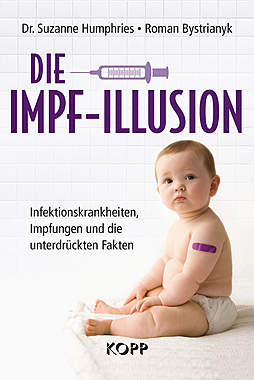- Baldige Rezession in Deutschland?? - CSc, 10.06.2001, 12:02
- In Ergänzung: Just the Facts - CSc, 10.06.2001, 12:49
In Ergänzung: Just the Facts
Just the Facts
According to the National Bureau of Economic Research (NBER), which decides the official U.S. recession dates, a recession is"a significant decline in activity spread across the economy, lasting more than a few months, visible in industrial production, employment, real income and trade." Of these measures, according to the NBER,"industrial production and employment are the two most important in determining recession dates."
Well, industrial production has now dropped for seven straight months -- something never seen outside a recession. In slowdowns that did not become recessions, the longest straight decline in industrial production was three months.
And in the past two months, nonfarm payroll jobs have fallen by 276,000, or 0.2%. Over the past four decades, such a large two-month loss of jobs has never occurred without a recession.
Meanwhile, the unemployment rate has risen 0.6%, from just 3.9% last October to 4.5% in April. Again, a 0.6% increase in the jobless rate has never occurred outside a recession -- the biggest rise in a slowdown was 0.4%, in the"minirecession" of 1966-67.
The popular theory is that the jobless rate is a lagging indicator, and the rise is the delayed effect of the slowdown in growth since last spring. The reality? Upswings in the jobless rate actually anticipate recessions by seven months on average.
Nor is it much consolation that the jobless rate is still relatively low because all six recessions between the late 1940s and early 1970s started with the jobless rate around current levels or lower. In fact, the jobless rate in 1953 was as low as 2.5%, but that didn't avert the 1953-54 recession.
How about the other key measures that define a recession? Real income has not declined significantly, but that was also the case during five out of the last nine recessions. Meanwhile, the broad measure of manufacturing and trade sales has dropped 1.6% since the peak in August. For all practical purposes, such a decline has never occurred outside a recession.
If the key measures that define a recession are behaving the way they do only during recessions, how likely is it that we've avoided a recession? The answer should be obvious, except to some economists.
Of course, some folks may be holding out for two straight quarters of decline in real gross domestic product, sometimes called the"technical definition" of a recession. It's nothing of the sort because not all officially recognized U.S. recessions meet that requirement (the 1960-61 recession didn't see two straight quarters of decline in GDP, and the 1980 recession saw only one quarter of decline in fixed-weight GDP, which we used until 1995). Still, it's a handy rule of thumb.
The increase in GDP the first quarter of this year, while revised downward recently, reassured many people that the economy is not in a recession. But that rise does not mean a recession didn't start in the first quarter, because it's possible the economy may have expanded until some point in the first quarter (accounting for the rise in GDP from the previous quarter) and contracted thereafter.
In fact, in three of the past four recessions, the quarter in which the recession began showed positive GDP growth. GDP then declined, and that's likely in this recession as well. If you want to wait for two straight declines in GDP to be convinced we're in recession, you're welcome, but you may have to wait until Halloween.
Those are the simple facts, and they are part of the public record. You can check yourself, and draw your own conclusions.
Here Be Monsters
The Fed's aggressive actions may help turn the economy around before year-end. That's what the markets are betting, anyway, and you know what? They may be right. But let's first recognize what the Fed's up against.
To reiterate something the markets don't want to believe, we're probably in a recession already, and that means in the near term, things will get much worse. And yes, I mean earnings.
Second, despite the Fed's actions, all our leading indices of economic activity are still falling, including ECRI's U.S. Long Leading Index, which has a longer average lead at recoveries than stock prices do. While ECRI's Weekly Leading Index has risen in recent weeks, that's primarily due to improved market sentiment.
The bottom line is that the leading indicators based on the economic fundamentals don't see a recovery yet, but the markets do. I'd be a lot more comfortable if the fundamentals confirmed what the markets are saying.
Separately, this is now an international recession, with GDP already declining for two straight quarters in Japan and Mexico, two of our key trading partners. GDP has already seen a one-quarter decline in Korea, Taiwan, Australia and even Switzerland, while growth has slowed sharply in Germany, France, the U.K. and Canada. The problem with such an international recession is that, unlike the past two decades, there is now no locomotive to pull any of the world's economies out of their downturns.
Thus, economies representing more than half the world's GDP are already sliding into recessions. In anticipation of this widespread weakness, growth in ECRI's Global Long Leading Index recently dropped to a 20-year low, recalling the international recessions of 1981-82 and 1973-75, during both of which the U.S. experienced severe, 16-month recessions. Were history to repeat itself, there would be no recovery until the summer of 2002. The Fed's aggressive rate cuts should limit the damage this time, but there's no room for complacency.
Meanwhile, for the earliest signs of a recovery, we'll watch the U.S. Long Leading Index, and yes, the international long leading indices. Until they turn up, hope for the recovery can be based mainly on faith in the Fed.
<center>
<HR>
</center>
gesamter Thread:
 Mix-Ansicht
Mix-Ansicht

